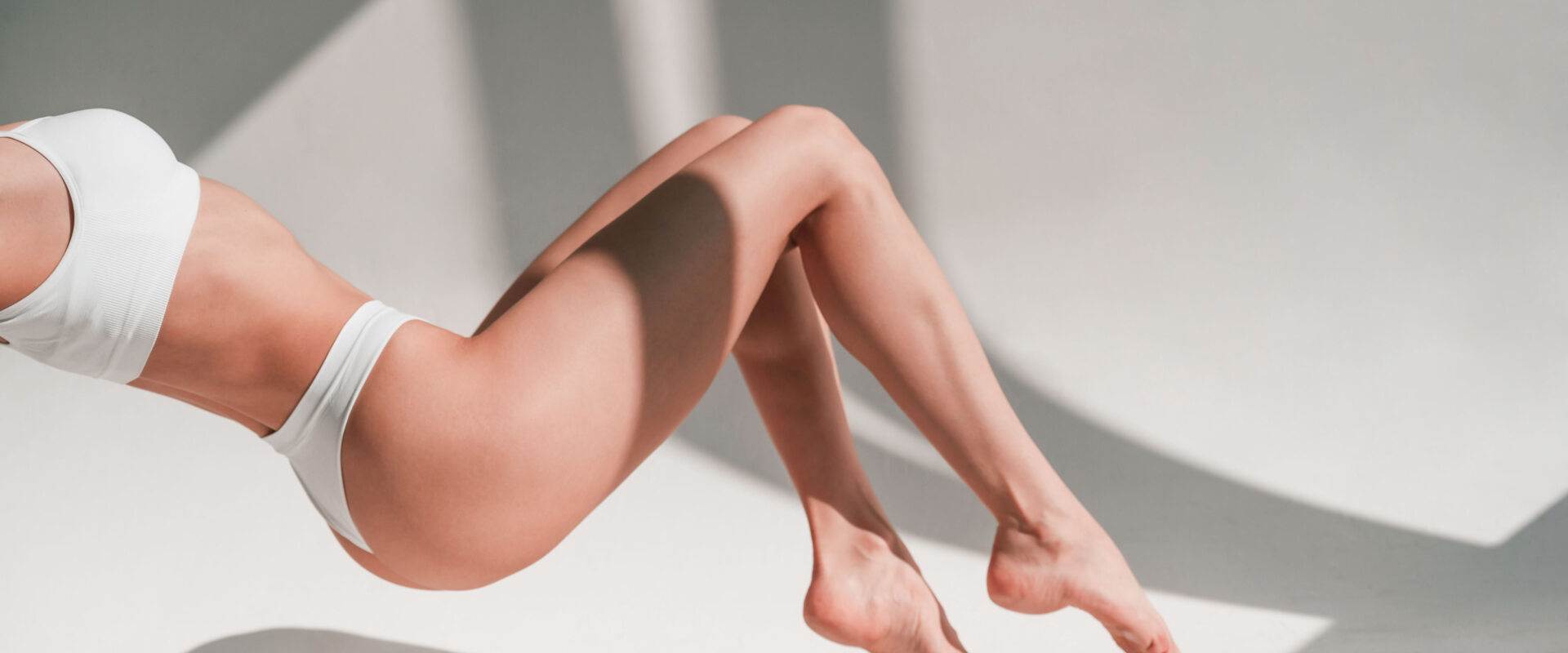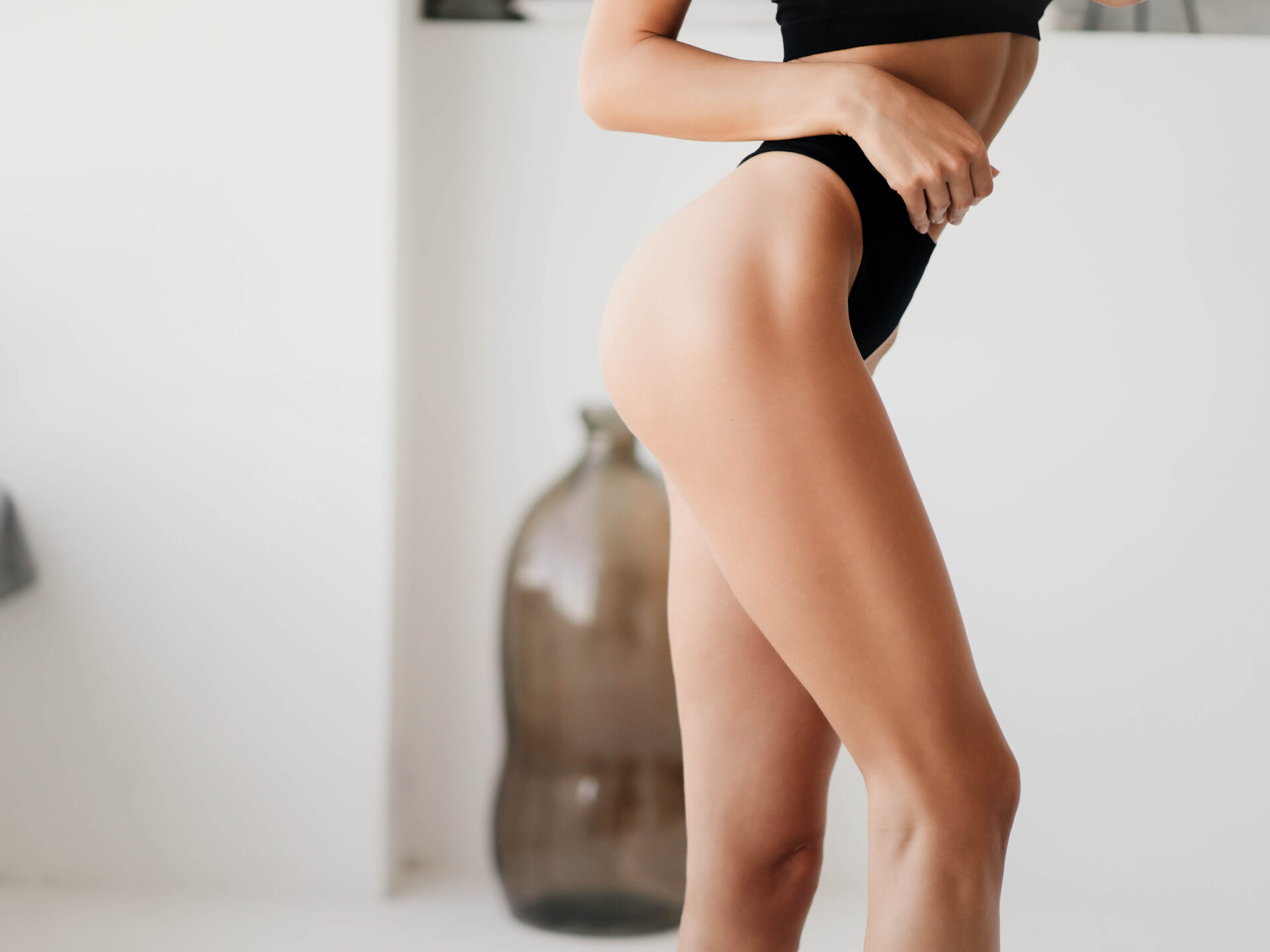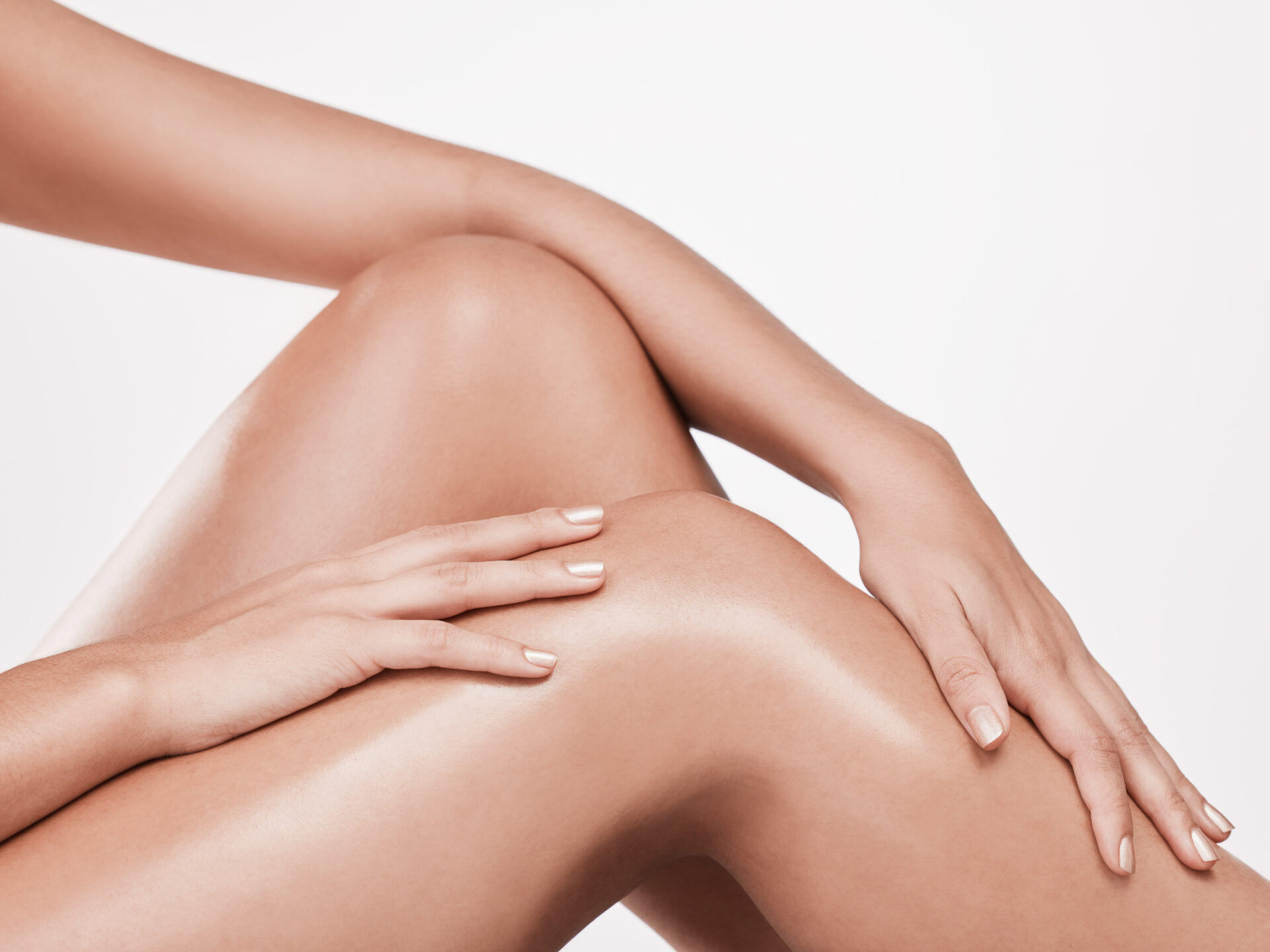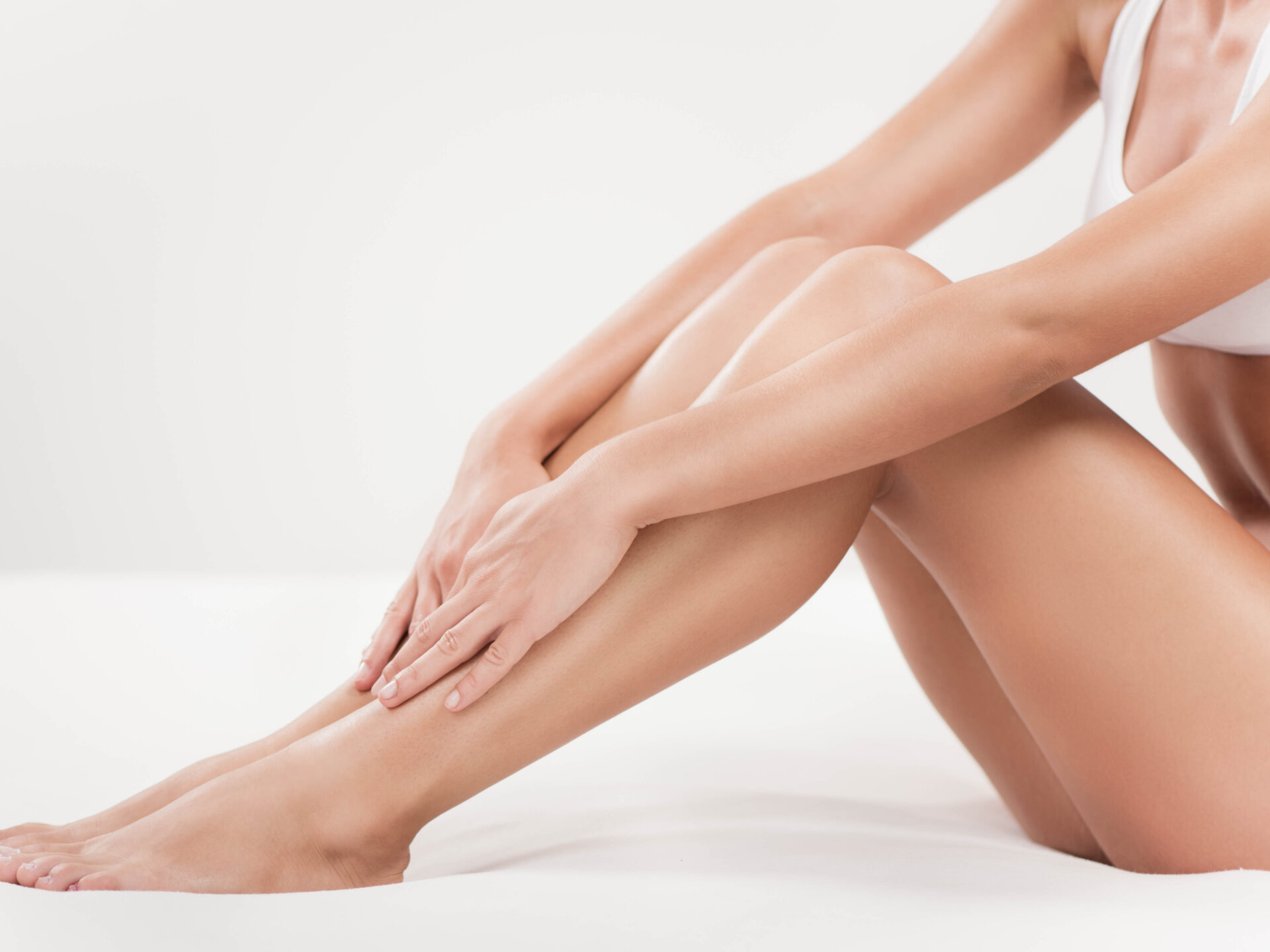What are spider veins?
Spider veins are small, dilated blood vessels that run just under the skin and often appear like a net or in fine veins. Unlike varicose veins, which affect larger veins, spider veins are usually harmless, but they can be perceived as a cosmetic problem. These fine vessels get their name from their appearance, which is reminiscent of the branches of a broom.
Spider veins are often painless, but can cause mild discomfort such as itching or burning. They often appear on the legs, but can also occur on other parts of the body, including the face and hands.
Spider veins are not usually associated with serious health problems. However, if additional symptoms such as pain, swelling or skin changes occur, a medical examination is advisable to rule out other venous disorders.
The causes of spider veins
The main cause of spider veins is a weakening of the vein walls and the venous valves. When these structures lose their normal function, blood can flow back to the heart less efficiently, leading to pooling in the small vessels. Risk factors for spider veins include genetic predisposition, pregnancy, hormonal changes, standing or sitting for long periods of time or injury.
Spider veins vs. varicose veins: The most important differences
Spider veins and varicose veins are two different forms of varicose veins, although they share some common characteristics. However, they differ in these respects:
Size and location. The most obvious difference lies in the size and location of the affected blood vessels. Spider veins are very small, superficial veins that run just under the skin and are often visible as fine red or blue lines or veins. Varicose veins, on the other hand, are larger, tortuous veins that lie deeper in the tissue.
Symptoms. Spider veins are generally harmless and usually cause no pain or discomfort, apart from possible cosmetic concerns. However, varicose veins can be accompanied by symptoms such as pain, swelling, fatigue and heaviness in the legs.
Health concerns. Spider veins are a purely cosmetic problem and are not usually associated with serious health complications. However, in advanced cases, varicose veins can lead to complications such as ulcers, skin changes or even blood clots.
Treatment options. The treatment of spider veins is usually for aesthetic reasons. The procedure of choice for removing spider veins on the legs is sclerotherapy. Varicose veins may require more extensive treatment, ranging from conservative measures such as compression stockings to more invasive methods such as sclerotherapy, minimally invasive or open surgery.
Possible risks due to spider veins
Spider veins are generally harmless and in most cases do not pose a serious health risk. They are more of a cosmetic concern. However, there may be small potential risks for some patients:
Cosmetic inconvenience. The most obvious "risk factor" with spider veins is aesthetic. Many people find spider veins annoying and therefore look for ways to remove them.
Possible symptoms. Although spider veins are usually painless, in some cases they can be accompanied by mild symptoms such as itching, burning or a slight feeling of pressure.
Psychological well-being. For some people, spider veins can cause discomfort or insecurity, which can affect their psychological well-being.
Serious health problems due to spider veins are extremely rare.
Prevention of spider veins
There are various measures that can help to minimize or prevent the appearance of spider veins. Although genetic predisposition can play a role, our tips can help to reduce the risk:
Regular exercise. Active exercise promotes blood circulation and strengthens the veins. Regular walking, swimming or cycling are good ways to exercise leg muscles and support vein health.
Weight management. Being overweight puts strain on the veins and can increase the risk of spider veins. Maintaining a healthy weight or losing weight if necessary can therefore be beneficial.
Leg positioning. Positioning legs above heart level, if possible, can facilitate blood return and reduce stress on the veins. This is particularly important during prolonged periods of sitting or standing.
Avoid prolonged sitting or standing. When sitting or standing, take regular breaks and change position to promote blood flow.
Avoid overexposure to heat or sunlight. Excessive heat can dilate the veins. It is therefore advisable not to expose yourself to extreme heat or intense sunlight for too long, especially in conjunction with sauna visits or sunbathing.
Compression stockings. Wearing compression stockings can reduce the pressure in the veins and support blood circulation, especially for people whose job requires them to stand or sit for long periods.
A healthy diet. Eating a balanced diet rich in fiber can promote overall health and keep weight in a healthy range.
Although these measures can help to reduce the risk of spider veins, they do not offer an absolute guarantee that they will be prevented. Especially if you have a genetic predisposition, the appearance of spider veins is often unavoidable.
Will my insurance cover the costs?
The treatment of spider veins is a cosmetic treatment and is therefore not covered by statutory health insurance. The treatment is therefore carried out as a self-pay service. Private health insurance companies may cover the costs in some cases; if in doubt, speak to your insurance company.
Frequently asked questions about spider veins
Spider veins are small vessels in the skin, so it is mainly vascular specialists, but also dermatologists, who are familiar with spider veins. At Phlebicum, you will find experienced specialists who have been practicing the treatment of spider veins for many years.
The development of spider veins can be influenced by various factors and certain groups are more susceptible to them:
Genetic predisposition. A family history is a significant risk factor. People whose parents or siblings have spider veins may be genetically more susceptible to developing this venous disease.
Gender. Women are more frequently affected by spider veins than men. This may be due to hormonal changes during pregnancy, menstruation and menopause, which can affect the elasticity of the vein walls.
Hormonal changes. Pregnancy, hormonal contraceptives and hormonal therapies can influence the appearance of spider veins. Pregnant women have an increased risk due to the additional pressure on the veins.
Standing or sedentary work. Occupations that require standing or sitting for long periods can affect blood flow and increase the risk of vein problems. This applies to teachers, hairdressers and office workers, for example.
Being overweight. Being overweight puts a strain on the venous system and can increase the likelihood of spider veins.
Age. With increasing age, the elasticity of the veins decreases, which can increase the risk of spider veins.
Lack of exercise. A lack of physical activity can impair the muscle contractions that promote blood flow in the veins. Regular exercise is important for vein health.
Heat exposure. Prolonged and intense sun exposure or excessive heat can dilate the veins and increase the risk of spider veins.
However, the presence of one or more of these risk factors does not necessarily mean that someone will develop spider veins. However, the combination of several factors can increase the risk. People who are in one or more of these risk groups can try to minimize their risk by adopting a healthy lifestyle and taking preventive measures.
The removal of spider veins using sclerotherapy costs 220 euros per session. A larger number of spider veins can be treated on both legs in one session. Depending on how many spider veins there are, two or three sessions may be necessary.
There are various creams and ointments on the market that claim to be effective against spider veins. However, there are no independent clinical studies that prove the effectiveness of such ointments against spider veins. Preaparates available on the market contain heparin, vitamin K, horse chestnut extract, troxerutin or arnica. From a medical point of view, creams are intended more for the relief of symptoms such as swelling or pain.
Spider veins can appear on various parts of the body, but are most commonly found on the legs. These are the typical areas:
Thighs. Spider veins can appear on the thighs, especially on the front or back.
Lower legs. This is one of the most common areas for spider veins. They can appear on the front or back of the lower legs.
Calves. The calves are also prone to spider veins, especially in people who stand or sit for long periods of time.
Feet and ankles. Spider veins can also appear on the feet and ankles, although this is less common than on the legs.
Face. In some cases, spider veins can also appear on the face, particularly near the nose or on the cheeks. These are often referred to as "facial spider veins".




